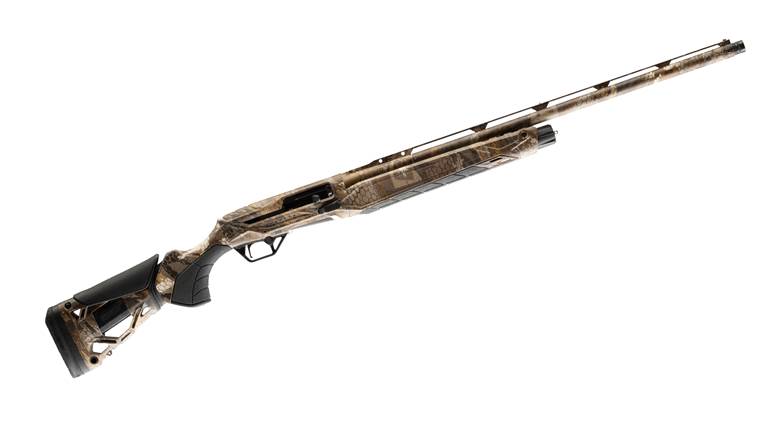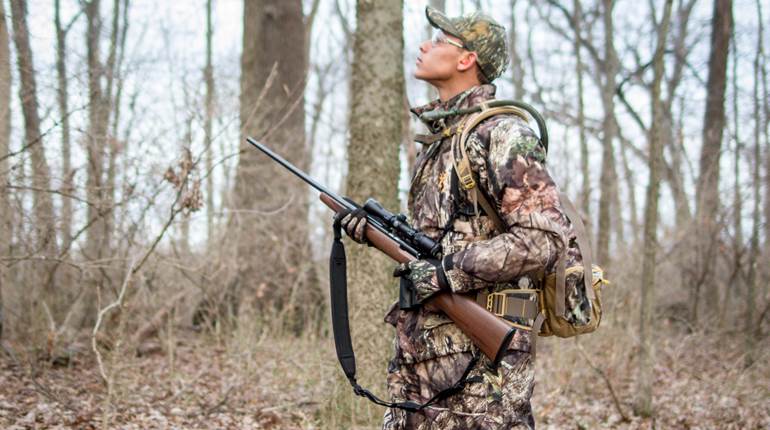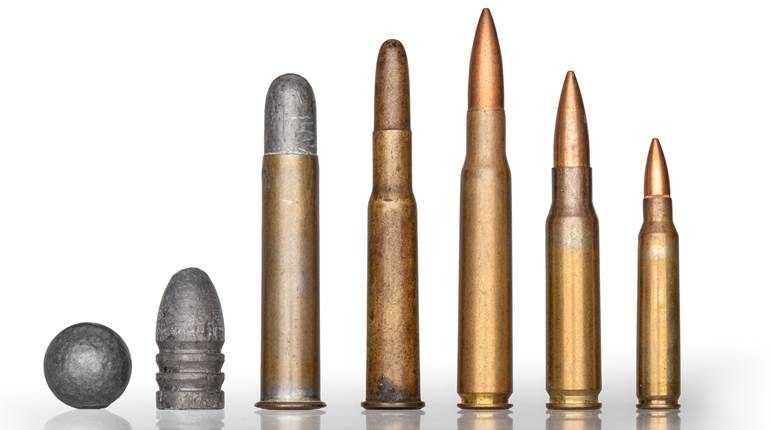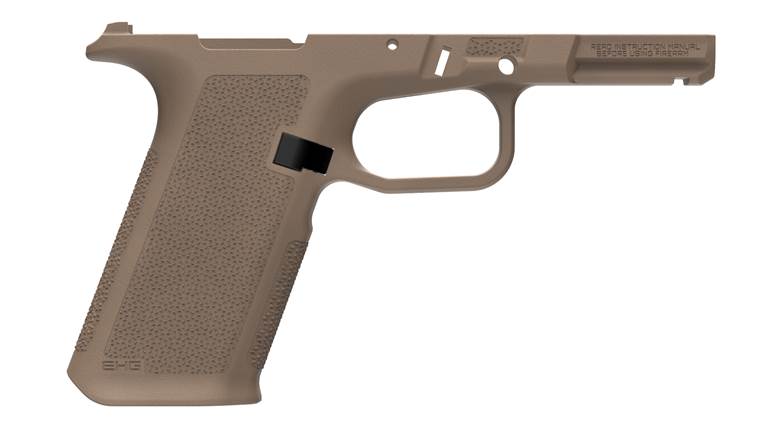
The U.S. Magazine Rifle, Model 1892, commonly called the “Krag,” served as the U.S. military’s rifle only from 1892 to 1903. However, the Krag, and its .30-40 Krag cartridge, enjoyed a much longer hunting life because a large number of surplus Krag rifles and carbines were sold to civilians through the Direction of Civilian Marksmanship. Those guns reportedly sold for as little as $1.50. The importance of those guns cannot be over emphasized because without them many would have gone without a hunting rifle during the economic poverty of the 1920s and 30s.

The Model 1898 was one of the last models of the Krag rifle made. The Springfield Armory manufactured the majority of Krag rifles over the years.
Commercial Krag cartridges went by several names over the years, from .30 Army to .30-40 Krag.Left, this Remington .30-40 cartridge headstamp of “30 USA.” Today’s .30-40 Krag cartridges wear a headstamp like this Hornady case.
The Krag was probably obsolete as a military rifle soon after it was adopted by the United States Army. The Krag required dropping one cartridge at a time into its magazine to load it. That was slow compared to the Mauser Model 1893 the Spanish used during the Spanish-American War, which used a strip of cartridges to recharge its staggered-box magazine in one motion. The Krag had only one front locking lug, compared to the Mauser’s two. That one lug, though, was enough to contain the .30 U.S. Army cartridge’s mild maximum average pressure of 40,000 copper units of pressure.
Over the years factory .30-40 cartridges were loaded with a variety of bullet shapes from spitzer to round nose.
The .30 U.S. Army (.30-40 Krag) cartridge’s original load fired a 220-gr. round nose bullet at a muzzle velocity of 2,000 f.p.s. Velocity was increased to 2,200 f.p.s. in 1899. The trajectory of the Krag’s bullet was inferior to other modern military cartridges of the time, though, including the 7x57 Mauser used by Spanish forces.
This group was shot with the author's Krag at 100 yards with Sierra 180-gr. GameKing bullets paired with H322 propellant. Hornady Custom 180-gr. SP InterLock shot this group at 50 yards from a Krag rifle with an aperture rear sight.
All these disadvantages eventually led to Krag rifles and carbines being replaced by the Springfield M1903. Introduction of the .30-03 cartridge in that rifle followed by the .30-‘06 Sprg. all but finished the .30-40 Krag cartridge.
A very few commercial rifles were chambered in .30-40, such as the Winchester Model 1895 lever-action and 1885 single-shot. But they never generated much interest in the cartridge. Truly, the .30-40 Krag would have fallen into oblivion if the military had not started selling its Krags after World War I. Sell several hundred thousand rifles and a huge demand appears for its cartridge.
The Rock Island Armory cartridge pouch was made for .30-40 cartridges.
Three of my great uncles, my uncle Jack and several of my wife’s predecessors, bought these surplus Krags during the 1920s and 30s. To a man, they were ranchers and times were tough back then. They may have also owned a single-shot .22 and a shotgun. But Krags were the only hunting rifle they owned. My brother now owns Great Uncle Lohn’s Krag rifle, which remains in full military dress with its 30" barrel and full-length stock.
This Krag rifle has been “sporterized” with a new stock, shortened barrel and aperture rear sight.
Many Krags were “sporterized.” One of them is a Model 1898 I inherited from my uncle Jack. The rifle was made in 1899, by its serial number. Someone cut its 30” barrel back to 25”s and installed a barrel band just back of the muzzle that holds a base with a Lyman blade front sight in a dovetail. The blade presents a bead to the aiming eye. A no-name aperture rear sight is mounted on the top rear of the bolt and is adjustable for elevation and windage. The walnut stock has a long forearm with a black cap, tight grip and a straight comb that positions the eye in line with the aperture. Tight inletting of the receiver and barrel and simple checkering panels on the grip and forearm show someone skillfully made the stock.
Uncle Jack’s Krag wears an aperture rear sight and a Lyman front sight.
Tight tolerances and fine finishes on the bolt and receiver parts make the Krag the smoothest cycling bolt-action ever made. The locking lug pops out of its seat in the receiver ring with the lightest of upward pressure on the bolt handle and the bolt glides back and forth like water pouring out of a glass. The large magazine on the right side of the receiver make a Krag unmistakable. Cartridges pretty much align themselves in the magazine if they are dropped bullet forward into the magazine. Closing the hinged cover, cartridges are pushed under, around and up into position by a spring follower. Pushing down the magazine cutoff lever makes the Krag a single shot and holds the cartridges in the magazine in reserve.

The hinged magazine is the Krag’s distinguishing feature. It takes a lot of work to jam cartridges in the magazine.
The last time I saw uncle Jack he was in a veteran’s home. He said he had carried his Krag in the mountains for decades and thought it was perfect for hunting deer and elk. His only regret was he never taken the rifle hunting antelope on the prairie. I set out to take the Krag antelope hunting when I inherited the rifle. Cartridges that came with the rifle were a mishmash of round nose bullets of various weights. All of them were corroded from years in the leather loops of a shell carrier.
With a batch of new cases in hand I set out handloading .30-40 cartridges. I shot Sierra 150-, 165- and 180-gr. bullets with a variety of propellants. By far, the Krag shot its best with H322 and 165-gr. GameKing bullets. Velocity was a bit slow at 2,212 f.p.s.
Uncle Jack’s Krag shot this group at 100 yards, not bad for a rifle made 120 years ago.
The Krag and I headed for the prairie in October. The plains spread to the curve of the earth and antelope across the distance glowed like lighted candles in the morning sun. I crawled up coulees and around cactus to close the distance on the antelope. After a few failed stalks I sat on a point to listen to the silence. 
Not too far away I saw some antelope with a buck in the bunch. Bent over walking, then crawling took forever to close the distance. I sat up to aim above the sagebrush, the front bead black against the buck-and I missed. In a second I fired again and the buck fell with a bloom of blood on its ribs.
On the drive out I stopped next to an abandoned homestead log cabin to hang up the buck on a log extending from a corner wall. A broken down chair stood outside the cabin door. While skinning the buck I thought I smelled strong smoke from a rolled cigarette, like uncle Jack had smoked. I glanced over my shoulder because I thought the chair had moved. But when I looked, the chair was vacant.
Additional Reading:
Hornady Saves the .30-40 Krag
Guns of the Spanish-American War





































